Location: Rosario, Argentina
Architects: Johnston MarkLee & Diego Arraigada Arquitecto
Project Architect: Sharon Johnston AIA
Project: 2004-2005
Construction: 2006-2009
Site Area: 2113 m2
Interior Area: 297 m2
Total Built Area: 361 m2
Developer: Lucas Ma (President, Markee LLC)
Structural Engineer: Ing Gonzalo Garibay
General Contractor: MECSA, Ing Gustavo Micheletti
Materials: Exposed Concrete, Anodized Aluminum, Plaster, Polished concrete, Polished Terrazzo, Lapacho Hardwood
The View House is designed under conditions generated by both the potential and limitations of large suburban developments. Situated near Rosario on the vast landscape of the Argentine plains, the 3200 sq foot house occupies a 22,750 sq foot parcel. The design is driven by two conflicting desires: engaging the living experience of the house with the views of the surrounding landscape and preserving privacy from neighbors.
Planning demands and the unique position of the peripheral corner lot demanded a specific approach to the massing of the house and its engagement with the landscape. A compact massing strategy with a minimal footprint liberates and preserves the ground, defining a two story structure. By denying the traditional front, side, and rear yard designations, and instead intensifying the facade as a surface that continuously modulates the relationship of interior to exterior, the perception of the house unfolds through a sequence of oblique views where every surface of façade becomes primary.
The formal and tectonic complexity of the house results from the repetition of four basic geometric subtractions from a primitive mass that create a dynamic exterior shape perceived simultaneously as embedded and lofted, cantilevered and slumped. In the interior, these operations define a continuous and modulated space that spirals upwards from the ground level to the roof terrace in a sequence of living areas. The four geometric subtractions have differentiated volumetric impressions on the inside of the house, each of which, together with a contiguous aperture, results in an interior landscape of paired surfaces, views, and lighting effects.

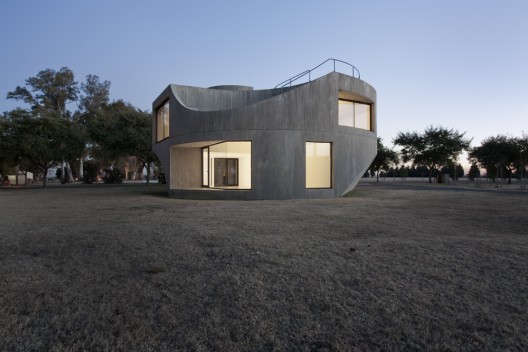
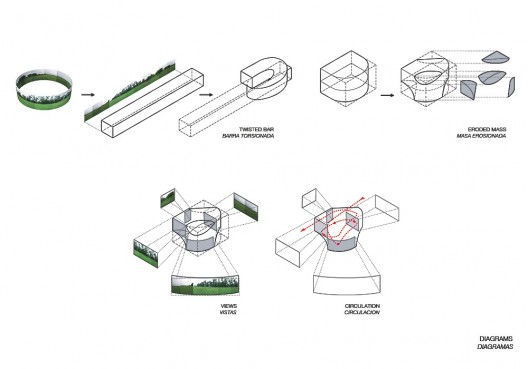

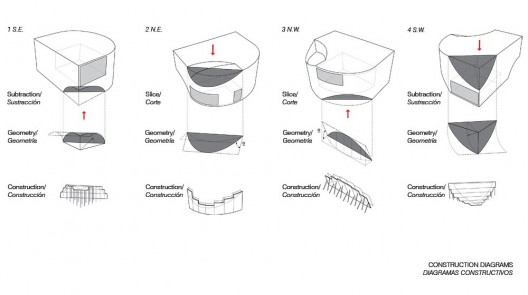
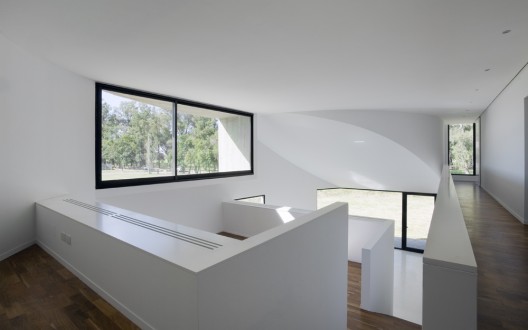
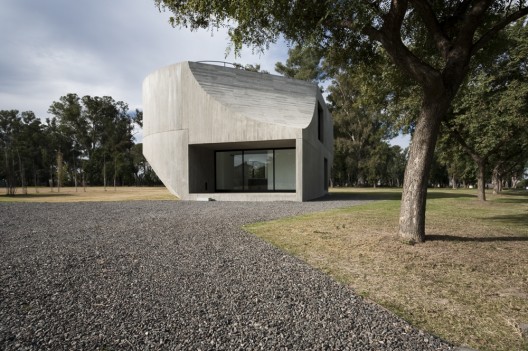
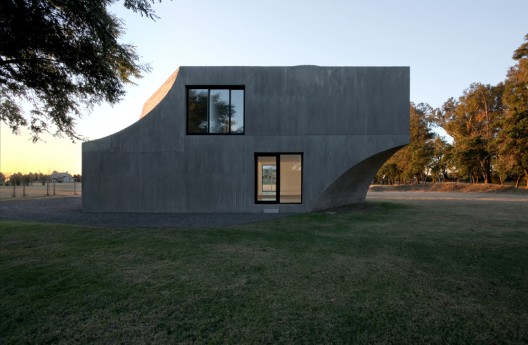
No comments:
Post a Comment